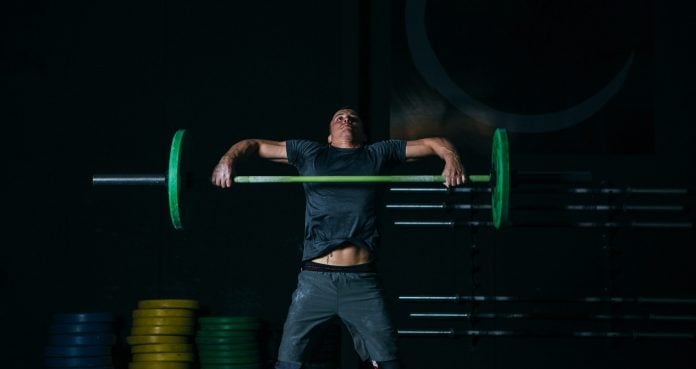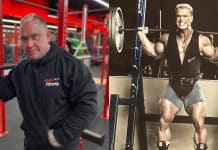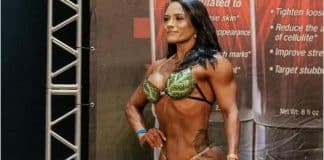
This exercise will work the fundamentals of strength and improve a powerlifter’s ability to lift big weight.
While many of us powerlifters focus on the big three exercises, being the bench press, squat, and deadlift, it is important to start looking towards other exercises that can really work to help improve our strength goals. Working on other exercises can enhance growth in other muscles, as well as work the same muscle group differently to target a certain way of growth.
What you’ll find is that smaller stabilizer muscles will get work done as well which will help assist those larger muscles as you start to increase in weight. The snatch pull is a technical exercise that is vital for Olympic weightlifters and one to really help boost your powerlift.
The purpose of looking towards other exercises to enhance your powerlift is that you want to try and increase the speed and height of the movement, as well as your overall ability to perform. Not only will this give you a serious boost during that one rep max, but as you continue progressing through training, you will add more weight, sharpen your technique, and start to build that physique you want most.
An exercise like the snatch pull allows you to work on mechanics which is vital for keeping you in the gym and away from injury, while also providing you the benefit of getting some great work done to feel accomplished.
Let’s take a look at the snatch pull and see just what this can do for your powerlifts. Even for those not looking to enhance their powerlifts per say, you can still benefit from performing an exercise like this. Improving our overall training needs is important and this exercise can help us achieve just that.
What Is The Snatch Pull?
The snatch pull is an exercise used by Olympic weightlifter to help build strength, speed, size, and a host of other aspects to their training vital for competition. For those looking to improve their snatch, this is a great way to nail down the fundamentals and work on a consistent movement to tackle any issues that may arise when performing any of these big lifts. As a way to help lifters learn how to properly use and move with the bar, while perfecting mechanics of these exercises which require a lot of weight, with the snatch pull you are one step closer to that Olympic performance (1).
Muscles Worked
For the snatch pull, you get a lot of lower body work, as well as some upper body muscles during the pulling portion. When it comes to some of the variations around, different muscles may be used at different times, but on the whole, this is a pretty great exercise to give your whole body a challenge.
Benefits Of The Snatch Pull
Build Muscle For Increased Strength & Power
With this exercise, you really start to build that strength and power you desperately seek. With a real challenge, the snatch pull allows you to grow and build serious muscle to aid in running faster, jumping higher, and having more all-around power when it comes to shorter movements. This will also help with other bigger, more staple lifts.
Promote Explosivity
As an exercise that requires a certain degree of explosivity, what you’ll find is that all other movements you perform will see an increase in this explosive power. For powerlifters and other sport specific movements, this will prove to be a huge boost to your overall performance and increased explosive power can give you the edge up on many of your opponents (2).
Work On Efficient Movement
This exercise requires a need and care with the utmost form and through doing so, you develop a sense of efficiency that can be seen with many movements. Working on technique is vital for progressing in a healthy and worthwhile way with all exercises and this is just one example of how much focus is needed to tackle this exercise. The more efficient and technical you are, the more weight you can toss on that bar to start lifting even bigger amounts (3).
Simple To Learn
Putting weight aside, this exercise is simple to learn and can be done with just the bar. For beginners, it will really work to establish form which will pay off in the long run as you progress in your training. It will also work to diversify your workouts offering more variety to keep you engaged. As you grow more advanced, toss on more weight and really start to see that muscle growth develop while other areas of your routine improve as well.
How To Perform This Exercise
Here are the steps to performing the snatch pull exercise:
Start with the barbell on the floor and place your feet just under the bar. Your torso will be in the middle of your knees as you brace your core and look for a tight low back. Your arms will slightly wider than shoulder width apart and you want your hands ahead of your elbows. Using your legs, drive the bar up, almost like an upright row, but once you get towards the top, shrug your shoulders and raise up on your feet. As you lower to the ground, gently bend your knees and with a controlled motion, bring the weight back down. Repeat for your desired number of reps.
Wrap Up
The snatch pull exercise is a technical variation and one that will really increase strength and power through precise movements. When it comes to powerlifts and elevating performance, this is one exercise to include in your routine. Looking for the best ways to advance our goals is key and through incorporating other exercises, one’s we may not have tried before, we target our muscle differently to enhance growth and lead us down a progressive road towards more gains. Try the snatch pull today and see what this can do for your powerlifting and weightlifting goals.
Let us know what you think in the comments below. Also, be sure to follow Generation Iron on Facebook, Twitter, and Instagram.
*Images courtesy of Envato
References
- DeWeese, Brad H.; Serrano, Ambrose J.; Scruggs, Steven K.; Sams, Matt L. (2012). “The Clean Pull and Snatch Pull”. (source)
- Waller, Mike; Piper, Timothy; Miller, Jason (2009). “Coaching of the Snatch/Clean Pulls Wit the High Pull Variation”. (source)
- Hori, Naruhiro; Chiu, Loren Z. F.; Kawamori, Naoki (2009). “Pulling movement in weightlifting exercises from a biomechanical standpoint”. (source)

















